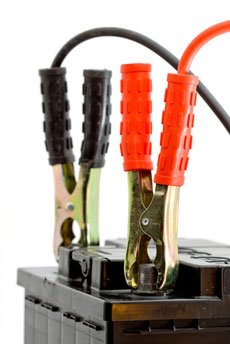It’s getting late, and you’re the last one in the office besides the late-night cleaning crew. With the soft buzz of a distant vacuum in your ear, you wonder how you’re going to bring everything together in time for tomorrow’s big presentation. You stare blankly at the empty slide in front of you, thinking just a few more slides and you’ll be done. Two hours later, tired and hungry, you’ve made some progress (if you call one mediocre slide progress) and even the cleaning crew has gone home now.
How can you keep your creativity flowing through the entire process of designing your slides?
Sure, we all start off with a burst of creativity, but you may lose your steam before completing your presentation. Creative blocks can occur at any time, but they’re more acute when you’re on a short deadline. When your back is against a wall, what do you do? Business people frequently approach these challenges like they do any other daily tasks, which are mainly non-creative tasks. They simply buckle down, try to focus hard really, and devote more time to the task at hand. They figure they’ll eventually be able to grind it out.
You may be familiar with the economic theory of diminishing returns. I believe the same theory applies to the creative process in presentation design (and other creative activities). Once you’ve exhausted your creativity, simply devoting more time to the design process will result in more time being spent to achieve less and less (i.e., diminishing returns). Frequently, as your creativity wanes so does your productivity. “Grinding out” your presentation is an inefficient use of your time and may result in an inferior final product if you’re forced to lower your standards in order to finish your slides in time.
If you run into these situations from time to time, what should you do?
Step #1 – Recognize when you’re in a rut

Recognize when you're stuck in a rut!
The first step to jump starting your creativity is recognizing when you’re stuck in a creative rut. Being self-aware of your situation is critical because it can be tempting to keep plowing ahead. I was recently working on a presentation at home that was due the next day, and it was getting late. I felt as though I was still missing 3-4 key slides to tie together some of my main concepts. I really wanted to wrap up the presentation before I went to bed, but I noticed that my creativity and productivity had fallen sharply. The last hour had yielded very little as I found myself vacillating on a single slide. Experience told me my current trajectory wasn’t taking me to a solution anytime soon. As the euphemisms go, I’d “hit a wall” or “run out of juice”, and now I was “dead in the water”.
Step #2 – Step away from your presentation
With a deadline hanging over your head, it seems counter-intuitive to step away from your slides. However, when your creative productivity is low, it’s exactly the right thing to do. You can’t force creativity. In the personal example above, I went to bed with an incomplete presentation and a limited window of time to complete it the next day. A curious thing happened the next morning. Rather than waking to my alarm, my mind kicked into gear processing the gaps in my presentation. By the time I hit my morning shower, I had several great ideas on how to complete my PowerPoint presentation. The amazing thing about your mind is that it will continue to process information subconsciously even when you’ve stepped away from the presentation design process.
Step #3 – Recharge your creativity
Once you’ve pulled away from your monitor screen, you need to do something entirely different to recharge your creative batteries. In the example above, simply getting away from my presentation and going to bed gave my brain an opportunity to process all the disparate information I was working on.
I’ve found that taking a break and engaging in a passive activity such as going for a short walk or drive is sufficient to jump start my creativity. At the office, it might be as simple as walking to the vending machines to get a snack or a drink. At home, it might be taking a break to play with the kids, walk the dog, or pick up some grocery items. I haven’t found more engrossing activities such as watching a movie or playing video games to be as helpful because your mind isn’t as free to process information from your presentation. However, any chance to disengage and refresh your mind is better than nothing.
Step #4 – Rinse and repeat
Sometimes all you need is a single jump start to get your creativity back on track. Other days can be more difficult due to fatigue or stress. Maybe you’re working on a larger or more demanding strategic PowerPoint presentation. As a result, you may need multiple jump starts throughout the presentation design process to keep your creative fires burning. The key is to not get sucked into the trap of trying to “grind out” your slides. Remind yourself that at any point, you can take a time out and rejuvenate your creative productivity. You might need to do it several times — there’s no shame in that. The final product is what matters, and you usually end up being more efficient even with the repeated breaks you take.

Ninjas hate unicorns. Don't be deceived by their cuteness because they're ugly, soul-sucking monsters that steal your time. (c) Shutterstock
Beware of unicorns!
Related to being in a creative slump, you also want to realize when you’re chasing a “unicorn” such as an all-encompassing analogy, chart, diagram, image, or quote that neatly sums up all your key ideas. Taking a break may allow you to figure out an alternative solution or give you a more realistic perspective on your situation. Don’t lament how much time you wasted. If my accounting courses taught we anything, it’s to not dwell on sunk costs (in this case hours). The unicorn doesn’t exist — cut your losses and move on.






January 16th, 2010 7:10 pm
The way I see it, if you didn’t outline your ppt right in the first place, then it’ll be pretty hard to even start on slide 2.
January 16th, 2010 11:34 pm
Agreed. Outlines are very important to the creative process with presentations. You’re going to be more organized and efficient with your time if you use one. They won’t necessarily protect you from creative blocks. You can still encounter creative issues when you’re initially creating your outline or when you try to execute on your outline.
November 10th, 2010 10:39 am
One thing that helps me is to see what other PowerPoint designers are doing.
A couple of my favorite sites are http://www.duarte.com and http://www.terbergdesign.com.
The latter has some helpful links to go to for design inspiration. Go to http://www.terbergdesign.com/links.htm